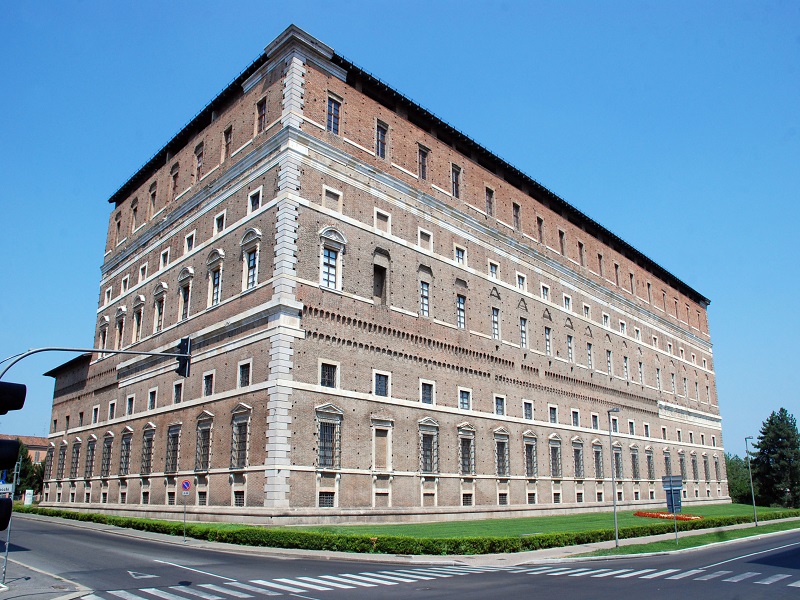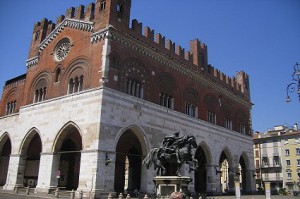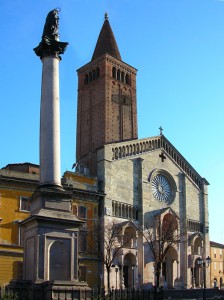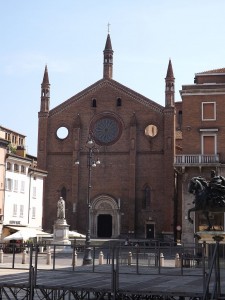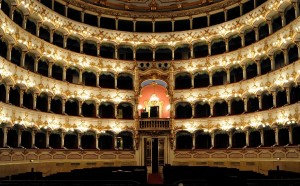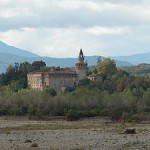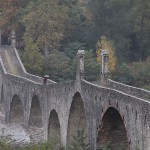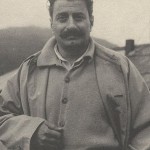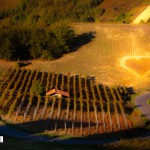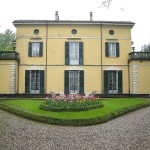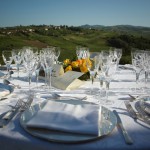35 PLACES TO VISIT IN PIACENZA
Piacenza is a 40 minute drive from Podere Casale and the Tidone Valley
Piacenza is a lovely archaic town founded by the Romans in 218 B.C. as a military colony.
Throughout the centuries, Piacenza has developed and has become a flourishing town with monuments, churches, museums and numerous artistic and cultural sites that deserve to be visited.
Monuments to visit in Piacenza
- Farnese Equestrian Statues
Francesco Mochi (1580–1654) received the commission from the town to celebrate Alessandro and Ranuccio Farnese, two Renaissance noblemen of Piacenza. The statues are considered masterpieces of baroque art and are situated in Piazza Cavalli in the heart of the city in front of Palazzo Gotico.
- Crusade Piazzale
This piazza is situated in the place where the Vatican Council convoked by Pope Urbano took place in 1095. Open to clergy and laity, over three thousand people participated and it was thus necessary to organize the Council outdoors and outside the city walls. Ambassadors of the Eastern Roman Empire attended to ask the aid of the Pope in their war against Muslims in Asia Minor. Pope Urbano II granted the requests and in the following Council of Clermont in November of the same year the first Crusades were proclaimed.
- Farnesiane Walls
A large stretch of the 16th Century wall, which surrounded the city during the Renaissance Era, still stands today. The remains are located to the north along Via XXI Aprile. Sports and cultural events are held today along the wall in the surrounding park.
- Facsal
Facsal is a lane which connects the center of Piacenza to the central train station. The walk is shaded by secular plane trees and runs, in part, above the remains of the Farnesiane wall. Ideal for walks or a bicycle rides or a relaxing pause on one of the benches all along the walk. The name comes from Vauxhall Gardens in London, very popular at the beginning of the XIX Century and generically used as a synonym for tree-lined garden. The people of Piacenza are very fond of this walk and Facsal is often the site of markets, leisure, sports and cultural events.
- Pontieri Monument
Commissioned by Giuseppe Barbellini Amidei to celebrate the founding of the Piacenza Genio Pontieri in 1883, the monument was inaugurated in 1928 with the participation of King Vittorio Emanuele III. The monument is located in the roundabout at the entrance of the city coming from the bridge on the Pò river which connects Piacenza to Lombardia. The monument approximately 16 meters in height is a marble structure with a stele decorated with wreathes and the emblems of the cities of Rome, Venice, Piacenza and Verona.
At the base of the monument there are four sculptures that represent Italy in the guise of Dea Roma, two soldiers that save a woman from drowning and two allegories of the rivers Isonzo and Piave, which represent the patriotism and heroism of the Pontieri during the First World War.
- Munta’ di Ratt
Flight of steps that connect Via Mazzini to the lower Via San Bartolomeo. According to popular tradition, the name comes from rats that ran up the stairs during floods of the Pò river. Other sources refer to the expression “montata ratta “ which indicated a steep ascent. In any case the flight of steps is very picturesque in all the seasons. In Spring and Summer it is surmounted by the flowers on the balconies of the buildings and enlivened by the outdoor tables of bars and restaurants of the old town with music and poetry in the evenings. In the winter, covered with snow, it becomes an enchanted corner in the heart of the city.
Palaces to visit in Piacenza
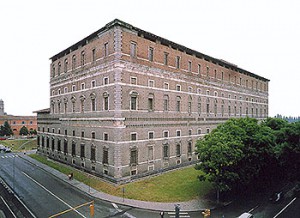 A jewel of 16th Century Renaissance architecture, this splendid palace, that today hosts the civic museums Just the sight of the palace makes us understand the reason for this choice: overlooking a piazza enriched with beautiful fountains, the three story palace conveys both fear and respect with its architecture. If the outside is breathtaking, the inside is even more so: through an impressive vestibule one enters and finds three naves, barrel vaulted ceilings, red granite Doric columns.
A jewel of 16th Century Renaissance architecture, this splendid palace, that today hosts the civic museums Just the sight of the palace makes us understand the reason for this choice: overlooking a piazza enriched with beautiful fountains, the three story palace conveys both fear and respect with its architecture. If the outside is breathtaking, the inside is even more so: through an impressive vestibule one enters and finds three naves, barrel vaulted ceilings, red granite Doric columns.
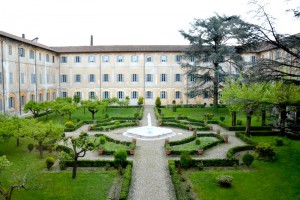 Charming, admirably conserved, today an important art gallery, Collegio Alberoni was built because Cardinal Giulio Alberoni wanted to help the poor clerics of Piacenza. The students of Collegio Alberoni could count on a “ saintly education” and a “ virtuous direction “ for nine years which included three years of philosophy, three years of theology and three years of morals. The Collegio was opened to the public in 1751 and several generations of professors distinguished themselves for their culture and dedication. Today Collegio Alberoni hosts countless art collections , a Library with over 130,000 books, the Department of Physics and Natural Science, a seismic and meteorology Observatory dating to 1802, an Astronomical Observatory (1870) an art gallery. The Nuova Galleria Alberoni exhibits 18 superb Flemish tapestries ( XVI – XVII Centuries ) and the famous “Ecce Homo” masterpiece of Antonello da Messina.
Charming, admirably conserved, today an important art gallery, Collegio Alberoni was built because Cardinal Giulio Alberoni wanted to help the poor clerics of Piacenza. The students of Collegio Alberoni could count on a “ saintly education” and a “ virtuous direction “ for nine years which included three years of philosophy, three years of theology and three years of morals. The Collegio was opened to the public in 1751 and several generations of professors distinguished themselves for their culture and dedication. Today Collegio Alberoni hosts countless art collections , a Library with over 130,000 books, the Department of Physics and Natural Science, a seismic and meteorology Observatory dating to 1802, an Astronomical Observatory (1870) an art gallery. The Nuova Galleria Alberoni exhibits 18 superb Flemish tapestries ( XVI – XVII Centuries ) and the famous “Ecce Homo” masterpiece of Antonello da Messina.
- Palazzo Gotico
Palazzo Gotico dates to the medieval ages: it is located in the central Piazza Cavalli and its construction was not completed. Commissioned in 1281 by Alberto Scoto, head of merchants and noblemen of the town, and designed by the architects of Piacenza Pietro da Cagnano, Negro de Negri Gherardo Campanaro and Pietro da Borghetto. The first thing that strikes the visitor is the classic low portico with majestic large windows that illuminate the enormous upper hall once the site of large town meetings. June 11th, 1351, the great poet Francesco Petrarca was hosted in this hall. A XIII Century Madonna with Child originally placed in a niche of the façade has been removed and preserved in the Palazzo Farnese Museum. The one we admire today on the façade is a faithful copy.
- Palazzo Mulazzani
There are above all two things to see in this splendid palace: the oblique grand staircase, probably the work of Cervini, and the splendid painting “Aurora and Cefalo” by Sebastiano Galeotti
- Palazzo Mandelli
Built in the second half of the XVII Century today Palazzo Mandelli is the headquarters of Banca D’Italia. It is located in Via Mandelli on the corner between Via San Marco and Via Borghetto and overlooks two splendid courtyards. The main façade is 75 meters long and with windows decorated with gables, masks and swirls. The emblem of the Mandelli Family is above the window of the balcony at the entrance. The entrance hall is the largest of all the palaces of Piacenza. The grand staircase with two parallel ramps is lined with a two series of windows decorated with frames and Rococò style cornices.
- Palazzo Landi
Situated on the corner between Via Roma and Via Giordano Bruno, Palazzo Landi dates to the Middle Ages and was completely restored in the XV Century. Today it hosts the Court of Justice. The palace was strongly backed by Manfredo Landi Counselor of the Duke of Milan. In 1578 the palace fell under the rule of Duke Ottavio Farnese, following conspiracy against his father Pier Luigi, to which also Agostino Landi, Count of Rivalta participated. The Renaissance portal in precious marble is the work of Giovan Pietro di Rho. Palazzo Landi is one of the most fascinating palaces in Piacenza with its splendid courtyard right in the center of the city.
- Palazzo Costa
This magnificently preserved palace is a significant example of 17th century architecture of Piacenza. Designed by Ferdinando Bibiena, the façade is decorated with, Rococò stuccos and wrought iron to underline its noble origins. The three sides, each with a portico, surround a vast garden with a precious balustrade and splendid statues dedicated to the seasons. The grand staircase is unique: the first ramp is inserted in the three arcades of the portico. Stuccos, frescos, statues of Giunone, Venere, Flora, and Pomona complete the work of art. The main room on the first floor dates to the year 1699 and was designed by Ferdinando Galli Bibiena.
- Palazzo Rota Pisaroni
The recent impeccable restoration of this palace now hosts the Fondazione di Piacenza and Vigevano. This palace has an unusual history: it was purchased in 1830 by the famous singer of Piacenza Rosmunda Benedetta Pisaroni and became the “elite lounge” of the city where it was easy to encounter the most promising artists and philosophers of the period.
- Palazzo Somaglia
Palazzo Somaglia is located in Via Taverna: lavish on the inside modest on the outside. Count Orazio Cavazzi of Somaglia had it built in 1688 on the site of a previous building owned by Count Barattieri. The construction lasted over twenty years. A simple façade with three types of windows and three wrought iron balconies above the entrance. The treasures are jealously conserved inside starting with a magnificent oblique four ramp staircase with a sandstone balustrade dating to the year 1730 and designed by Domenico Cervini. Beautiful frescos by Francesco Natali adorn the splendid rooms.
- Palazzo Scotti da Fombio (Collegio Morigi)
The palace was designed by Giuseppe Marione and dates to the year 1780. A U shaped loggia merits attention as well as the stuccos and precious frescos that decorate the staircase and the grand hall. The palace is situated in Via Taverna and dates to the year 1490 when Count Paride and Ercole Scotti had it built. The palace has a bare brick façade with sculptures along the perimeter including two human figures that hold the family emblem. The portal made of Candoglia marble dates to the year 1492 and is the work of maestro Gregorio Prini. The courtyard is beautiful with its portico and finely decorated columns. Giacomo Morigi bought the palace in 1869 and transformed it to the educational and cultural center of the city which became known as “Collegio Morigi“
- Palazzo del Governatore
Headquarter of the Chamber of Commerce, the Palazzo del Governatore is a splendid neoclassic XVIII Century palace designed by Lotario Tomba. A large clock, meridian and calendar can be admired on the impressive façade. The palace was restored and enlarged in the 17th Century. Until the year 1860, it was the headquarter of the governor of the city.
- Palazzo dei Mercanti
The palace dates to the 17th century and today hosts Town Hall. It was designed by Angelo Caccialupi, an architect from Piacenza and commissioned by the Colleggio dei Mercanti, an important city institution from the Middle Ages to the Napoleonic period. The palace has three floors: on the ground floor we can admire a fabulous loggia with columns that support semi-circular arches. The façade is unique for the period with its portico which was necessary for public meetings. During the French domination, old corporations were abolished and the palace was used as a constituency, the court of commerce, a Filodrammatica theatre, demonstrating the importance of this palace through the ages.
Churches to visit in Piacenza
- Duomo
The Cathedral of Santa Maria Assunta and Santa Giustina is a Basilica Minor. Built between the years 1122 and 1233 it is one of the most important examples of Roman architecture. The interior is a latin cross with three aisles and the façade is pink marble. The bell tower is 71 meters in height. There are three different organs in the church built in three different periods.
- The Church of Sant’Antonino
Dedicated to the patron saint of Piacenza, the Romanesque style of the basilica is characterized by an impressive octagonal tower. San Vittore, first Bishop of Piacenza, commissioned the church and construction began around the year 350 and ended 25 years later. The relics of Antonino, Christian martyr assassinated in Val Trebbia, are conserved in the church
- San Savino Basilica
The original nucleus of the church dates to the year 903: the church was destroyed and rebuilt in the XI Century, even if the church we see today is the result of numerous restorations made necessary over the centuries. The last intervention dates to the years 2006/2007 under the guidance of Beltrami. A wooden cross dating to the XII Century can be admired above the High Alter which was built in 1764.
- The Church of San Francesco
Situated in Piazza Cavalli, at the intersection with Via XX Settembre, this splendid church stands out for its austere Gothic style. It was built between the years 1278 and 1373 and buttresses, a rose window, a cusp and spires can be admired on the façade. The sides are decorated with rampant arches .Magnificent XV and XVI Century frescos adorn the interior. In 1848, the annexation of the city of Piacenza to the Kingdom of Sardinia was proclaimed in this church.
- The Church of San Sisto
San Sisto is a Renaissance basilica that merits a visit for its 1514 wooden choir. Construction of the church began in the XIV Century. In ancient times, a temple was built in 874 commissioned by Angilberga, wife of Ludovico II. San Sisto was the most important Benedictine Monastery in Piacenza for centuries.
- Basilica of Santo Sepolcro
A large impressive basilica designed by Alessio Tramello between the XV and XVI Centuries. Buttresses and a Baroque portal sand out on the façade. During the Napoleonic Reign, the basilica was a military hospital; it was reconverted to a church in 1903.
- Basilica of Sant’Agostino
The basilica dates to the XVI Century but is now deconsecrated and often hosts exhibitions. Neo-classic style, it was designed by Camillo Morigia and is the only church in Piacenza with five naves. Parts of frescos by Malosso can be admired inside.
Must See Sights in Piacenza
- Piazza Cavalli
Piazza Cavalli is the historic, cultural and artistic center of the city: it owes its name to the equestrian statues of the Farnesi and the work of Francesco Mochi which attract thousands of tourists every year. Piazza Cavalli, once called Piazza Grande, was inaugurated in the XIII century when Palazzo Gotico and the church of San Francesco were built. The position of this piazza is strategic for visiting the city because it is in the center of the medieval town. Through the ages new constructions have changed the city but not Piazza Cavalli which remains an outdoor monument.
Lovers of art cannot miss this jewel: a complete modern gallery in which modern art at its best with over 400 paintings of artists such as Hayez, Filippini, Bianchi, Segantini, Cremona, Rosso and many more. The Princes of Piemonte, Umberto and Maria Josè of Savoia inaugurated the Galley October 11th, 1931. The founder, Giuseppe Ricci Oddi , died in 1937 and left all his possessions to the gallery: money, equities, jewels.
- Galleana Park
The park, situated in the Galleana district, is dedicated to Pope Giovanni Paolo II; it is in the Via Manfredi area and is the green lung of the city: 150,000 square meters where people in Piacenza love to relax and walk. The park has toilets, paths in the woods, fountains, and notice boards with information about the flora and fauna in the park.
- Sala dei Teatini (Church of San Vincenzo)
Once a church, today an auditorium for art exhibitions and music events. Consecrated by Bishop Claudio Rangoni in 1612 on the site of a previous church built in the 13th century, today it hosts rehearsals of the “L. Cherubini” Youth Orchestra directed by Maestro Muti. The interior is very beautiful: three naves and a series of frescos dating to the beginning of the 17th Century by Roberto De Longe ( Brussels 1646 – Piacenza 1709 ) and Giovanni Evangelista Draghi (Genova 1654 –1712);the barrel vauled ceiling of the central nave is the work of Felice Biella and Federico Ferrario.
- Pietra Parcellara
Pietra Parcellara is the “mountain of Piacenza”: with its 836 meters Pietra Parcellara dominates Val Trebbia between Travo and Bobbio. A walk around the summit permits a magnificent view of Val Trebbia and the nearby Val Bobbiano and Val Luretta and Monte Penice. To reach the summit there are two alternatives: a road that starts in Travo, crosses Chiosi and reaches the summit, or a road that passes through Passo della Calderola. The route by foot is not difficult and is suitable for adults and children.
- Municiple Theatre
Not simply a theatre but an actual work of art: the municipal theatre of Piacenza in Via Verdi is a majestic example of late 18th Century architecture, with very precious stuccos and ,paintings. The opera “Zamori” music by the Bavarian Giovanni Simone Mayr, maestro of Gaetano Donizetti, inaugurated the theatre the 10th of September, 1804.
- Civic Museum of Natural History
Piacenza is extraordinarily rich in art and culture, but also nature is very important: the museum conserves and protects the flora and fauna of this part of Emilia Romagna. Reconverted in what was once the site of the public slaughterhouse, it was built between the 19th and 20th Centuries and inaugurated May 12th, 1892. The museum today covers over 2000 square meters and includes exhibition halls, laboratories, multimedia halls.
- Public Library
The Passerini-Landi library is famous for its beauty, for its majestic rooms and for its books that date to the year 1774 when the Duke of Parma and Piacenza Ferdinando di Borbone established the first Royal Library of Piacenza in the college of San Pietro. The first books belonged to a collection belonging to the Jesuits, expelled from the Dukedom in 1768. 1774 is universally acknowledged as the founding of the Library, even if it functioned fully only four years later when the first librarian was nominated: Cristoforo Poggiali, priest and historian.
- Scalabrini Museum
Open by advance booking, the Scalabrini Museum is part of the diocesan museums and created thanks to the generosity of the collaborators of Bishop Giovanni Battista Scalabrini, who began donations after the Bishop’s death in 1905. In particular, Monsignor Camillo Mangot, Monsignor Lodovico Mondini, and Don Carlo Spallazzi started the project. The Galleria dei Padri Scalabriniani has over one hundred paintings and sculptures from the 16th Century on. Of particular interest, paintings of Benvenuto Tisi, known as Garofalo and Giovanni Battista Trotti, known as Malosso, a Crucifix attributed to Francesco Cairo and a painting of Saint Peter attributed to Guercino.
- San Raimondo Monastery
We conclude our list of places to visit in Piacenza with the Monastery of San Raimondo defined “ an oasis of the spirit in the heart of the city”, certainly not just a slogan because in this Benedictine Monastery the rule is work and prayer.
The Monastey is named after San Raimondo, head of a family, tireless worker, man of faith, founder of the first hospital in Piacenza in 1175. He died in 1200 and was carried in triumph by his people as a sign of their respect and admiration.
Pictures: Wikipedia
